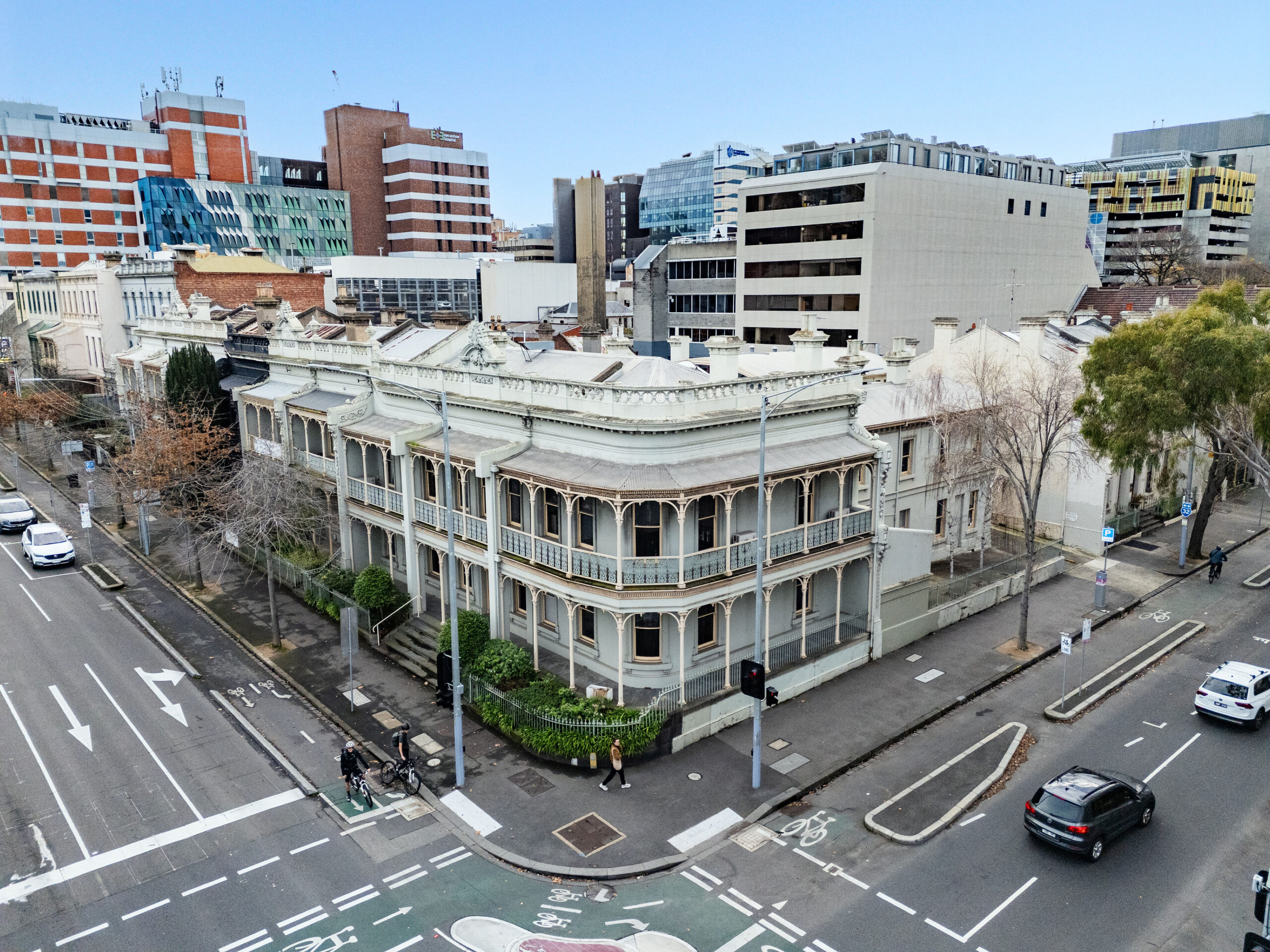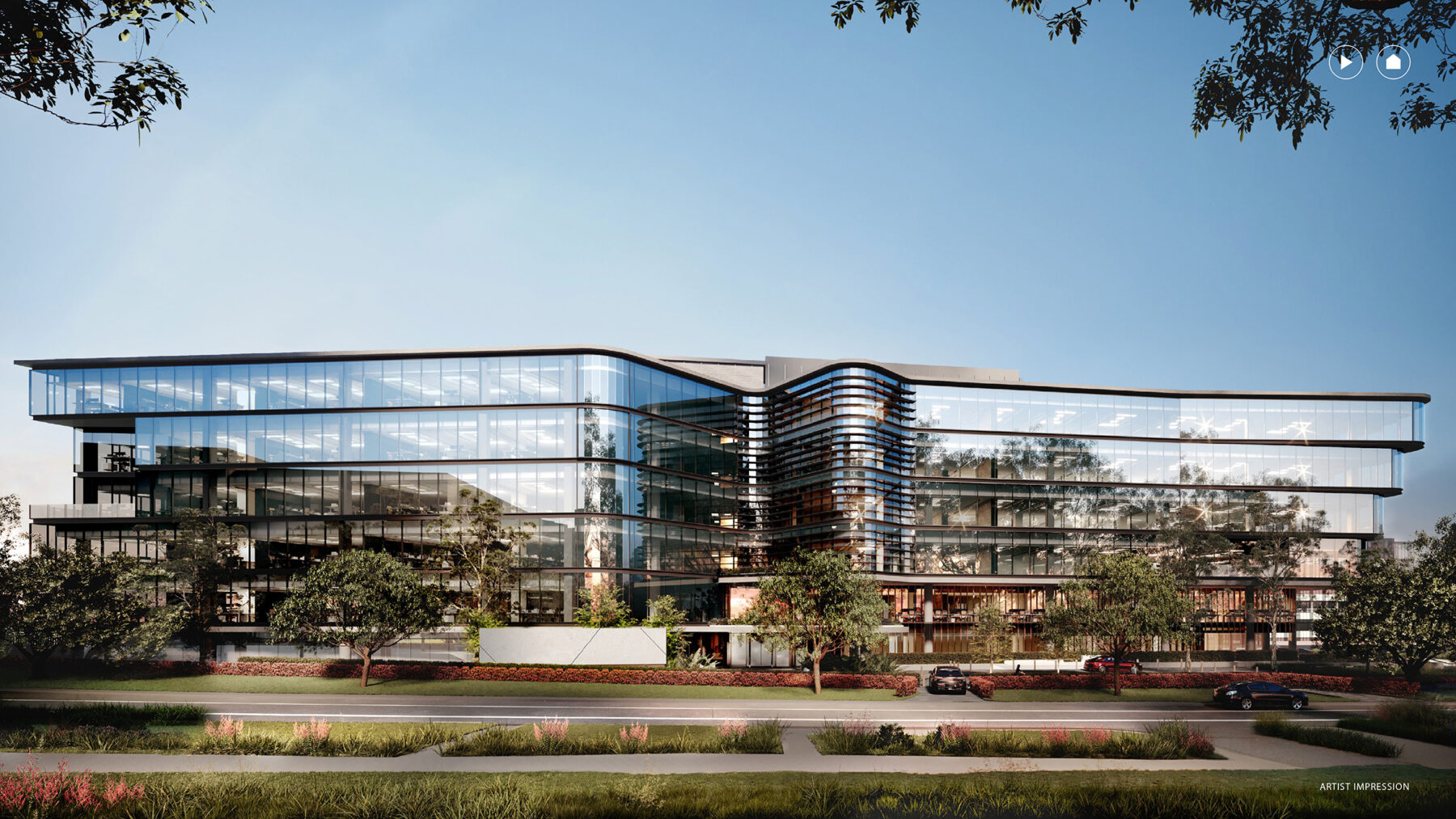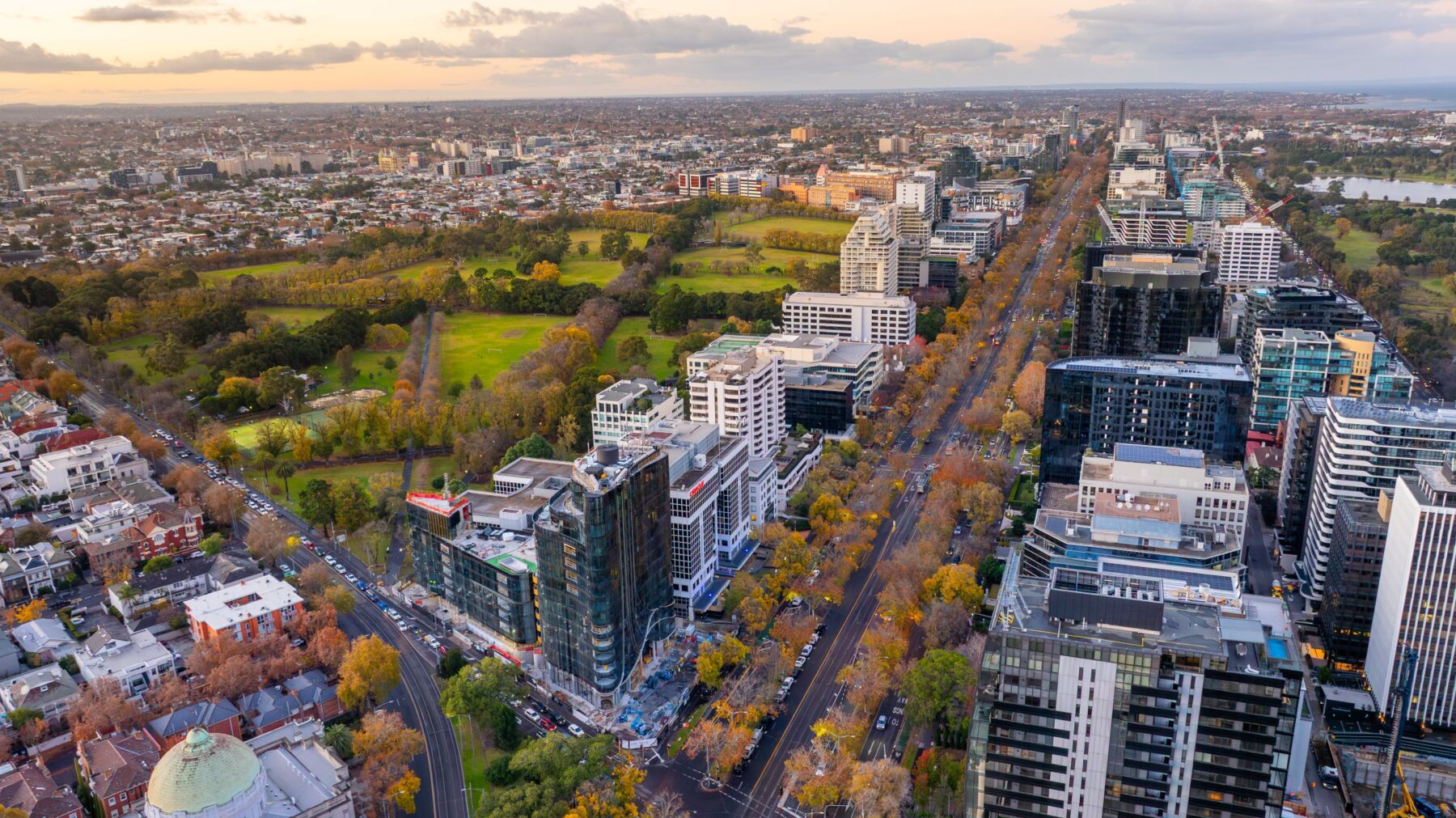CBRE Commentary: Property Council of Australia Office Vacancy Statistics February 2025
7 February 2025
To accompany the release of the latest Property Council of Australia Office Market Report, CBRE’s Office Leasing experts share their insights into the key trends emerging in Australia’s major office markets.
National overview:
Tom Broderick, CBRE Head of Office & Capital Markets Research, Australia
“We expect that national vacancy will peak in 2025 and begin to decline. The supply outlook has declined due to feasibility issues from high construction costs and interest rates. However, there will be above average supply delivered in 2025 in markets like Brisbane and Canberra.
“Sublease availability is at its lowest level since 2019, indicating that contractionary tenant moves are becoming less common. We’d expect the return to office to continue to improve this year, particularly given changes from US firms in recent times. While the upcoming Australian Federal election may introduce some uncertainty in leasing activity, certain sectors are expected to return to a growth phase in 2025.
“We expect Sydney and Brisbane to lead the country from a rental growth perspective this year. However, other markets should record some moderate growth, given the high new development rents are making existing buildings look relatively affordable.”
Tim Courtnall, CBRE Head of Investor Leasing, Pacific
“The Australian office sector performed strongly over the second half of 2024. While decision making remained slow, we experienced very strong transaction volumes in Q4 across all major cities. Flight-to-quality and flight-to-amenity remain key priorities for occupiers and this is continuing to create strong demand for relocations.
“Interestingly, we continued to see strong leasing activity from professional services firms across the country and we have started to see enquiry improve from the technology sector in late 2024.
“A key theme evolving across the country is the diminishing supply in new buildings, with high demand for newer product in all markets, offering superior sustainability credentials and amenity. I expect to see this theme gain momentum and given the higher focus on sustainability credentials and workplace, Prime Grade buildings in core locations will exponentially outperform secondary buildings over the next five years.
“Given higher fitout costs and a shrinking supply of contiguous Prime Grade floors we expect to see less 5,000sqm+ relocation transactions, with activity to be dominated by 1,000sqm to 3,000sqm occupiers. Contributing to this is the fact that some occupiers in good quality assets with a reasonable fitout are opting to complete cosmetic upgrades to avoid relocation disruptions. For example, only about 25% of 5,000sqm+ Sydney CBD tenants with upcoming lease expiries made decisions to relocate in 2024.
“Looking ahead, we expect improving conditions in all core leasing markets, with sublease vacancy rates decreasing, expected face rental growth and stronger confidence in the overall economy. Supporting these broader themes, organisations are mandating staff returning to the office, which will improve sentiment and we could see headcount growth back on the table. We have already seen greater economic and geo-political stability over the past few months and this will provide organisations with greater certainty in their decision making, supporting our commercial leasing markets.”
City by city agent commentary:
Sydney
Rachel Vincent, State Director & Head of Office Leasing, New South Wales
“The Sydney leasing market is witnessing a flight-to-quality and flight-to-value across all key precincts, including the Sydney CBD, North Sydney, Western Sydney, and South Sydney. Tenants are carefully deliberating their decisions as many plan for their workforce to return to the office three to five days per week. This trend reflects a strategic shift towards optimising workplaces for return-to-work mandates. CEOs recognise the benefits of having their teams together for culture, collaboration, and productivity. However, it remains to be seen whether workplace nostalgia from pre-COVID days plays a role, and if the war for talent will demand more flexibility. Notably, commute times are halving with the new metro making the office return easier.
“Tenants are seeking to secure favourable lease terms by initiating renewals earlier than usual. This proactive approach allows them to analyse their space needs thoroughly and leverage current market competition. Renewing a lease has become as strategic as relocating. Reflecting on 2024 data, more than half of all public sector leases were renewed, highlighting the emphasis on cost stability and minimising disruption caused by moving. Landlords are now further incentivised to retain existing tenants to maintain portfolio value and avoid vacancy spikes. Higher vacancy rates provide tenants with a wider range of options, leading to a more deliberate decision-making process.
“Rising construction costs due to supply chain disruptions are causing developers to re-evaluate projects. This hesitation, combined with the need for higher pre-commitment rates and economically viable rents, is leading to a decrease in new office supply. This in turn will likely result in lower vacancy rates. In 2025 we will start to see the CBD core and good quality A grade properties leased, which will reduce choice for tenants.
“Despite these limiting factors, gross face rents continue to climb. The average gross CBD rental rate currently sits at $1,771 AUD/sqm and we anticipate this upward trend to continue across most markets. It is also worth noting that outgoings are increasing amid higher land tax, electricity and insurance costs.
“Overall, the Sydney leasing market presents a dynamic environment with strong tenant demand, extended transactions, and rising rents. Landlords and tenants alike are adopting strategic approaches to navigate this competitive landscape.”
Melbourne
Ashley Buller, Head of Office Leasing, Victoria
“2024 concluded with a surge of significant activity and major tenant commitments in the Melbourne office market. Notably, Docklands secured two of the largest office leasing transactions in Victoria in over five years, totalling more than 60,000sqm, and over 35,000sqm of subleasing transactions were concluded. These deals, and others are expected to drive a positive shift in Melbourne’s office fundamentals. We are forecasting prime net absorption across the CBD to reach approximately 80,000sqm in 2025, driven by rising occupancy rates, tenants centralising to the CBD and white-collar employment growth.
“As Melbourne’s occupancy levels, currently the lowest among major Australian capital cities, begin to rise, we anticipate a corresponding increase in net absorption. With occupancy rates poised to grow from their current low base of 59%, and white-collar employment growth expected to grow at the highest rate nationally until 2030, we are optimistic about the Melbourne CBD office market’s prospects. The significant rightsizing of office space over the past four years has normalised workspace requirements, paving the way for positive absorption.
“While tenant demand, as measured through enquiry volumes, was down by around 10% in 2024 compared to 2023, we observed a higher conversion rate of enquiries to deal transactions. Tenants are now coming to market earlier, driven by caution around delays in lease negotiations and fit-out works. Most requirements remain in the sub-500sqm market, with a notable increase in average tenant size above 1,000sqm, indicating larger tenants are regaining confidence in their workplace needs. We also saw 78% of enquiries seeking A-Grade space and 75% of enquiries below 1,000sqm seeking fitted space.
“We believe the headline vacancy rate for Victoria is at, or has passed, its cyclical peak. While vacancy rates will remain elevated in the short-term, due to recent and upcoming completions and below-average pre-commitments, we are positive about the outlook for 2025 which will be driven by larger tenants making commitments, tenants continuing to centralise and rising occupancy rates.”
Brisbane
Coen Riddle, Director, Office Leasing
“Queensland is poised for an exceptional year of continued rental growth, driven by decade-low vacancy rates. While vacancies in regional markets such as the Sunshine Coast and Gold Coast remain at historic lows, Brisbane’s CBD has experienced the most significant reduction in both the prime and overall vacancy rate.
“Brisbane take-up in 2024 was robust, although it was notably influenced by several large tenant recentralisations and growth from the Federal Government. Deals under 1,000sqm have remained subdued, with SME inquiries at the lowest levels since 2020. The primary factor contributing to these revised figures is supply; there has been a lack of new development stock entering the market over the past 36 months. The last new development in Brisbane’s CBD, 80 Ann Street, was delivered in April 2022.
“By June 2025, CBRE forecasts that CBD prime vacancy will decrease to 6.1%, while total CBD vacancy will drop to 8.4%. Although these figures will enhance market dynamics, particularly for existing landlords, vacancies are expected to rise in 2026 with the completion of 205 North Quay and 360 Queen Street, along with the associated backfill supply. With improving economic conditions and ongoing challenges in delivering new office developments, CBRE predicts that CBD vacancy rates will ‘yo-yo’ in the single digits until 2028.
“Slow decision making and occupier uncertainty are likely to remain headwinds in the first half of 2025. However, Brisbane is well positioned for continued growth. Beyond traditional expiry-led demand, we anticipate increased demand from the SME sector, along with various infrastructure project requirements, will contribute to a strong net absorption figure in 2025.”
Gold Coast
Tania Moore, Senior Director, Office Leasing
“The Gold Coast office market continues to experience strong demand, with A grade vacancy rates hitting a record low of just 2%. This equates to approximately 1,750sqm of available space, underscoring the ongoing demand for high-quality commercial properties and the challenges faced by businesses in securing suitable locations.
“The Robina/Varsity Lakes, Broadbeach, and Bundall precincts are all reporting vacancy rates below 5%. In contrast, Southport and Surfers Paradise have higher vacancy rates of 9.2% and 10.4% respectively. The increase in Southport’s vacancy is attributed to the addition of the CBD33 building following its refurbishment completion in late Q4 2024, while Surfers Paradise has been impacted by an uplift in vacancy across secondary supply.
“Despite robust occupier enquiry throughout 2024, the lack of suitable options is restricting tenant movement and continuing to drive strong rental growth across all building grades. This trend is expected to support the feasibility of new developments in the future.
“Looking ahead, market vacancy is anticipated to remain steady due to the absence of a pipeline of new supply. Recent government decisions affecting the education sector, a major occupier in the Southport market, have led to several large education providers confirming their exit from the precinct in the first half of 2025. This is likely to result in increased vacancy levels in Southport over the next six to 12 months.”
Adelaide
Andrew Bahr, Director, Office Leasing
“As 2024 drew to a close, there was a notable surge in activity with many tenants in the sub 500sqm market eager to secure leases before year end. With a mix of tenant sizes, within the last quarter alone, a total of 13,000sqm was committed with most of these transactions occurring in A grade buildings. Remarkably, over 70% of the committed space was for fitted-out areas, continuing the trend that favours move-in-ready options.
“Recently repositioned properties, such as 100 King William Street, 30 Pirie Street and 55 Currie Street are gaining considerable momentum following the completion of extensive refurbishments. These buildings have become increasingly attractive to tenants, culminating in six lease agreements being finalised in December across these locations alone.
“This uptick in leasing activity not only highlights the growing demand for A Grade office spaces in Adelaide but also reflects the successful transformation of these properties into desirable work environments. We saw some larger enquiries in the second half of 2024, those being SA State Government for 8,000sqm -14,000sqm, Australian Tax Office for 19,000sqm and People First Bank for 5,000-6,000sqm.
“With limited space available in Gen2 and Gen3 stock for the foreseeable future, increasing levels of demand and little new supply, rental growth is expected to continue into 2025.”
Perth
James Phelan, Director, Office Leasing
“The Perth office market has entered a period of stabilisation. Softer commodity prices and the continued high interest rate environment has resulted in a more cautious tenant market which has been observed from our softer enquiry and lease transaction activity recorded during 2024. During H2 2024 total tenant enquiry volumes, in sqm, continued to moderate and were down by 16% year-on-year whilst transaction levels, new deals over 500sqm, were down 42% year-on-year.
“The high construction cost environment in Perth has created a significant gap in market and economic rents. This has constrained the supply outlook with no new developments currently committed to post completion of Nine The Esplanade in the first half of 2025. As a result, despite the softer demand outlook, the vacancy rate in the Perth CBD is expected to trend down over the next few years driving accelerated forecast rental growth of 25% over the next five years, as market rents look to catch up to current economic rents. During Q4 2024 Prime Grade net face rents in the Perth CBD increased by 3.3% year-on-year while B Grade net face rents increased by 3.1% year-on-year.
“Tenant caution and increased fitout costs are the main headwinds for 2025, however Perth is structurally a safe market given the subdued supply outlook. We anticipate strong demand from the SME, engineering and mining sectors and are continually encouraged by the volume and rate of expansion of the State and Federal Government tenants in the Perth market.”
Canberra
Troy Markos, Director, Office Leasing
“The end of 2024 saw a surge in leasing activity, especially in the SME sector for spaces under 500sqm, as many occupiers sought to finalise deals before the Christmas break. This led to tighter vacancy levels in the core CBD and Parliamentary Precinct markets, with occupiers still favouring fitted stock. There was encouraging growth in the 500-1,000sqm size bracket, though demand for spaces over 1,000sqm remained low. Town Centres continued to face challenges with rising vacancies and limited demand.
“The Commonwealth Government clarified its long-term strategies with several significant commitments, including DFAT’s move to Barton and the Australian Electoral Commission’s relocation to 26 Narellan Street. These consolidation efforts will introduce new supply to the market from 2026 onwards. These decisions also shed light on government’s accommodation preferences for building quality, floor plate sizes, and how they assess their space needs versus targeted occupancy.
“Net Zero requirements are a priority for Government heading into 2025, with a focus on ensuring prospective accommodations meet a minimum 5.5 Star NABERS Energy rating and align with their Net Zero strategy. Groups like Austrade and the Department of Health and Aged Care are actively considering these factors. Landlords are concentrating on necessary CAPEX upgrades to ensure buildings remain relevant to meet these standards, aiming to attract and retain Commonwealth tenants.
“Value for money is a key consideration, with new development rents in the mid- to upper- $700s per sqm, testing the Department of Finance’s acceptance threshold. Several new speculative developments, such as 1A Constitution Avenue, Anzac Park East, and 10 Petrie Plaza, are under construction, reflecting confidence in demand for this type of product from occupiers.
“As we move into 2025, attention is on the Federal Election, which will put Commonwealth activity on hold for the short term. Depending on the election outcome and any Government changes, new requirements may arise from potential Machinery of Government changes.”
Western Sydney
Mark Martin, Director, Office Leasing
“The second half of 2024 was largely lacklustre in the core Western Sydney market of Parramatta, with limited lease activity. The take-up that occurred was primarily at the smaller end of the size range, 100-300sqm, and in reconditioned or speculative fitted suites. Leases in excess of 1,000sqm were sparse.
“Elsewhere in non-CBD suburban markets such as Norwest, Rhodes and Sydney Olympic Park, leasing activity was more robust as tenants took the opportunity at expiry to ‘move up’ the quality of supply chain.
“January 2025 signals a notably improving market with several leases in ‘solicitors instructed’ carry over from late 2024. These deals are mostly expected to sign in February and March so Q1, 2024 will see a positive start for Parramatta. Of this there are four negotiations moving forward, collectively amounting to approximately 6,000sqm.
“We expect effective rents to remain challenged and what improvements there will be during the year, will be steady. Overall, we anticipate 2025 will be a better year than 2024.”
North Sydney
Michael Darcy, Director, Office Leasing
“The CBRE North Sydney Office Leasing team had a landmark year in 2024, achieving our highest performance on record of 49,540sqm deals across 88 transactions.
“In 2024 we saw increased rents and stabilised incentives in the existing premium market. There was strong activity in large floorplate quality stock like 1 Denison Street, 177 Pacific Highway, Blue & William at 2 Blue Street, 101 Miller Street and 100 Arthur Street. We’ve seen demand from suburban tenants remain consistent across 2024 and the vacancy rate is forecast to spike in suburban markets.
“With fitout costs remaining inflated, we’re seeing tenants remain focused on fitted space and 94% of the transactions were for fitted offices. Over the past 12 months, sublease vacancy has shrunk by 53%. This has been due to customers focusing on flight-to-quality as well as the importance of value and existing fitouts.
“Our forecast for 2025 is that we’ll continue to see occupier trends of flight-to-quality and a suburban shift, with higher absorption levels in the premium stock and a decline in overall vacancy.”



